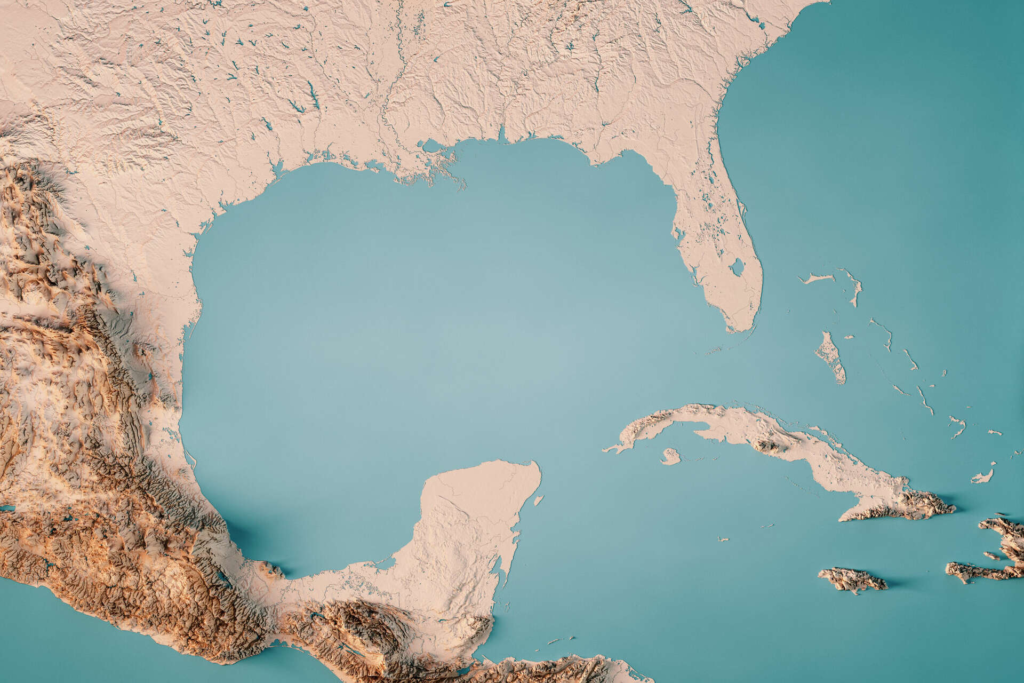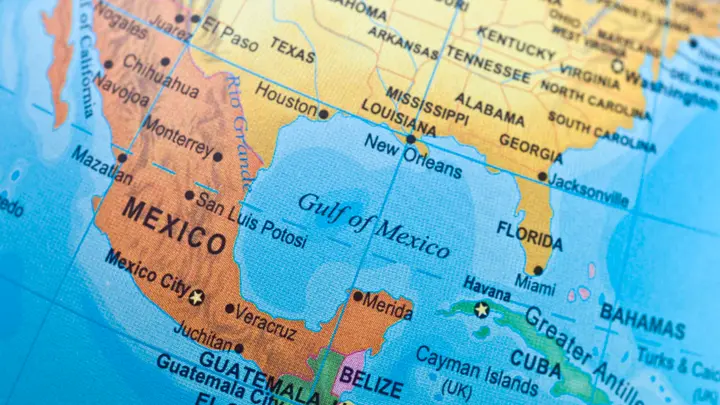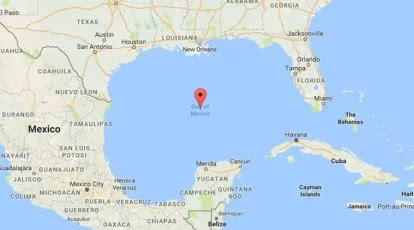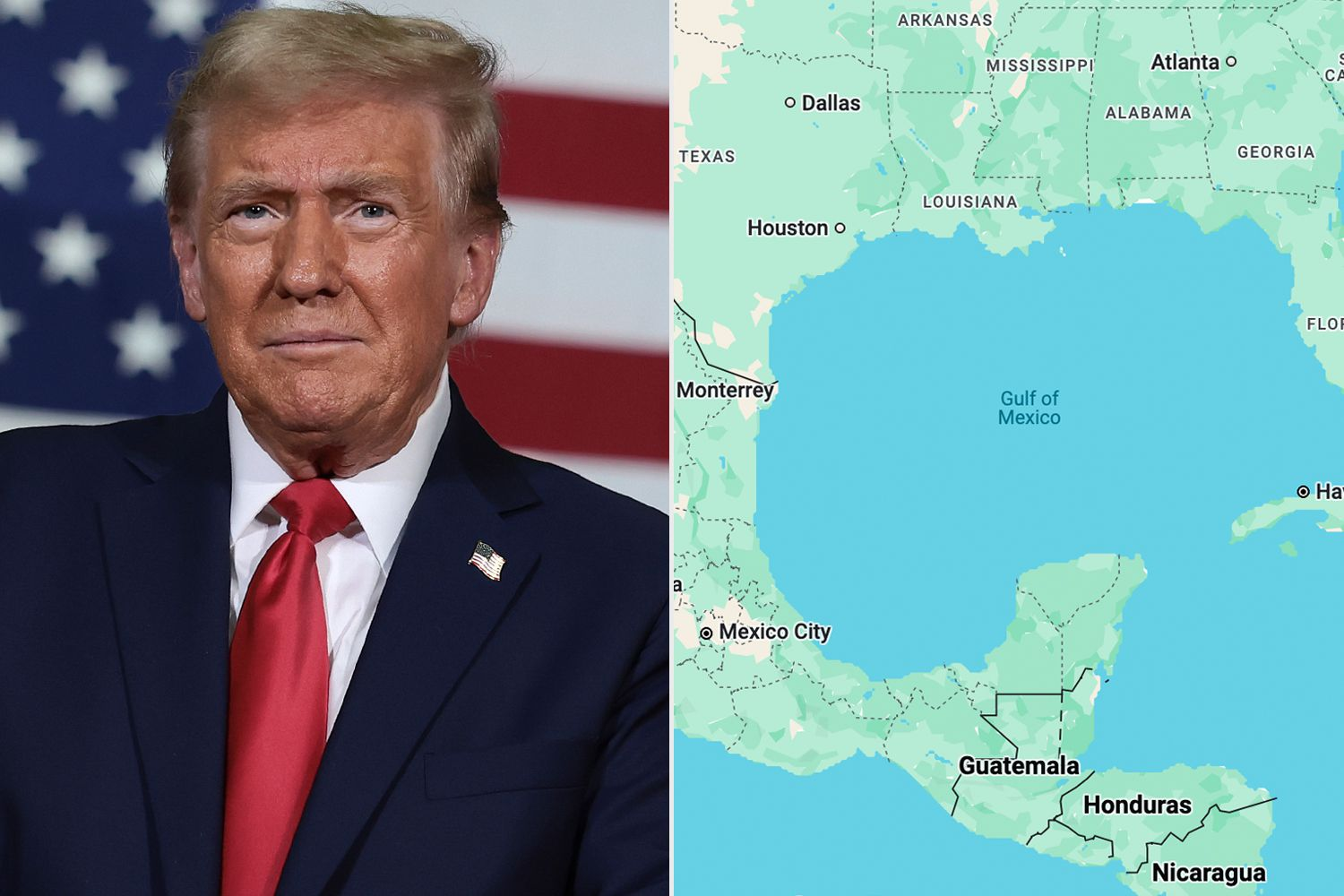In a move that has raised eyebrows across the globe, the Trump administration has issued an executive order renaming the Gulf of Mexico to the “Gulf of America.” This change, which will be reflected on Google Maps for users in the United States, is part of a broader initiative by President Donald Trump to make changes to various geographical names within the country.
While the name change only applies to Google Maps users in the U.S. for now, the controversy surrounding it touches on themes of national identity, international relations, and the power of digital platforms in shaping perceptions of the world.
A Presidential Order: The Gulf of Mexico’s New Identity
The renaming of the Gulf of Mexico is just one of the many changes implemented by the Trump administration through a series of executive orders issued early in his presidency. The Gulf of Mexico, a body of water that has long been associated with both Mexico and the United States, will now be labeled the “Gulf of America” in official U.S. government mapping sources.
This decision is reflective of Trump’s desire to assert a more dominant American identity on the world stage. By making this change, the U.S. government aims to redefine the cultural and geographical boundaries of the region, reinforcing the idea that certain locations should be strongly associated with the United States.
For the U.S. government, the renaming signifies an assertion of American influence in a globalized world. The Gulf of Mexico has long been an essential part of the region’s economy, as it is a key route for international trade, oil exploration, and maritime activities.
Read : Disturbing Help Sign on Google Maps Near Los Angeles Shipping Yard
However, the name “Gulf of Mexico” has always underscored the proximity and historical relationship between the U.S. and Mexico, as the body of water lies along the coast of both nations. By renaming it the “Gulf of America,” the Trump administration is effectively diminishing Mexico’s influence over the body of water and promoting the idea of a unified North American identity centered around the U.S.
Do you support Google Maps renaming the Gulf of Mexico to the Gulf of America?
— Donald J. Trump 🇺🇸 News (@DonaldTNews) January 28, 2025
YES or NO?
If YES, I will follow you back! 🇺🇸 pic.twitter.com/ekONbulef8
The move follows through on a campaign promise made by Trump to reshape American landmarks and national symbols. This is not the first time the Trump administration has engaged in controversial name changes.
The administration has also made attempts to alter other geographical names and symbols, such as changing the names of national parks and monuments. This drive to impose new names on iconic American landmarks is in line with Trump’s populist agenda, which seeks to emphasize American nationalism and pride.
Google Maps: Navigating the Renaming and Its Global Impact
As part of the executive order, Google Maps will update its digital maps to reflect the renaming of the Gulf of Mexico. However, the changes will be geographically specific. The “Gulf of America” label will only be visible to users in the United States.
For users in Mexico, the name will remain as the “Gulf of Mexico,” respecting the country’s long-standing historical and cultural ties to the region. Additionally, outside the U.S. and Mexico, Google Maps will display both names, recognizing the diverse perspectives on the body of water.
This renaming process reflects the influence of major technology companies like Google in shaping how geographical information is perceived globally. As the world’s leading digital map service, Google Maps plays a significant role in how users interact with the world.
Given the widespread use of Google Maps across the globe, the decision to adopt these name changes underscores the influence that the U.S. government can have on digital platforms.
For many users, the name “Gulf of America” will become the standard label for the body of water, particularly those in the United States. However, the dual labeling system—different names in different countries—raises questions about the consistency of digital mapping practices and the potential for confusion.

The decision also touches on the growing issue of cultural and geopolitical tensions in the digital age. As countries assert their sovereignty over disputed territories or try to reshape their international identity, digital platforms like Google Maps serve as battlegrounds for these debates.
This is particularly significant in regions where borders and geographical names are contested. For example, the ongoing dispute between Japan and South Korea over the name of the body of water separating the two countries is reflected in Google Maps, where it is listed as the “Sea of Japan (East Sea)” in many parts of the world.
Similarly, the naming of the Persian Gulf (now labeled “Persian Gulf (Arabian Gulf)”) has been the subject of international dispute, with Iran accusing Google of erasing the Persian heritage associated with the waterway.
Google’s response to these geopolitical naming disputes has typically been to respect local preferences and adjust the names based on the government-approved sources in each region. This approach ensures that the platform remains neutral in areas where historical, political, or cultural differences may exist.
However, the latest changes ordered by the Trump administration reflect a shift in how Google’s naming conventions will be applied, especially in cases where the U.S. government plays an active role in determining new names.
Controversy and Global Reactions to the Renaming
The renaming of the Gulf of Mexico to the Gulf of America is not without its controversy. Critics of the move argue that it reflects an unhealthy trend of American exceptionalism, where the United States seeks to assert dominance over global spaces, even those that do not belong exclusively to the country.
The Gulf of Mexico, as its name suggests, has historical and cultural ties to Mexico. The name has been recognized for centuries and is an integral part of the region’s identity. Renaming the body of water to the Gulf of America may alienate neighboring countries and send a message that the United States is unwilling to share geographical spaces with its neighbors.
Moreover, the renaming may further exacerbate tensions between the U.S. and Mexico, especially in light of the ongoing political debates over immigration, trade, and border security. While the name change itself is symbolic, it may be perceived by some as another example of the U.S. trying to assert control over the shared spaces between the two countries.
In Mexico, the Gulf of Mexico has been a source of national pride, as it plays an essential role in the country’s economy, culture, and history. Changing its name could be viewed as an affront to the Mexican people and an attempt to undermine their connection to the region.

On the international stage, the renaming could also create diplomatic friction between the U.S. and other countries that share the Gulf of Mexico. While countries like Cuba and the U.S. have long had complex relations, renaming the Gulf of Mexico could heighten tensions in the region, particularly given the global importance of the Gulf’s natural resources.
The name change could also draw attention to broader issues of colonialism, nationalism, and the politics of naming, as countries around the world grapple with how best to represent their territorial claims and historical legacies.
The renaming could also lead to confusion for travelers and global citizens who rely on digital platforms to navigate the world. The dual naming system on Google Maps may be perplexing for some users, especially when navigating international waters or engaging with digital maps for educational or research purposes.
As the world becomes increasingly interconnected, digital maps serve as key resources for understanding global geography. However, as we see with the renaming of the Gulf of Mexico, even something as seemingly benign as a body of water can be the subject of international dispute and controversy.
The Future of Geographical Naming and Digital Mapping
The renaming of the Gulf of Mexico raises important questions about the future of geographical naming conventions, especially as digital platforms continue to dominate how people navigate the world.
With the rise of digital mapping services like Google Maps, the power to name places is shifting from traditional government authorities to private corporations. This shift is significant, as companies like Google have the ability to influence how millions of people perceive geographical spaces.

As the world becomes more connected, the influence of digital platforms on geography and national identity is likely to increase. Governments will continue to assert their authority over naming rights, but the role of companies like Google in determining which names are adopted globally will also play a key role in shaping future mapping conventions.
The Gulf of America controversy highlights the growing tension between national sovereignty, historical legacies, and the digital platforms that shape how we understand our world.
In conclusion, the renaming of the Gulf of Mexico to the Gulf of America represents a significant shift in how the U.S. government is reshaping national identity through geographical names.
While the change will primarily affect U.S. users of Google Maps, the controversy surrounding the renaming highlights broader issues of cultural diplomacy, international relations, and the role of technology in modern geopolitics.
The decision to apply different names based on geographic location underscores the power of digital platforms to influence perceptions of the world and the ongoing debates surrounding the politics of naming.

